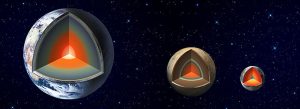20 April 2017-DENVER — In May 2018, NASA Discovery’s InSight mission will be the first lander to place an ultrasensitive broadband seismometer on the surface of Mars — making it the first planetary seismometer deployed since the Viking missions of the 1970s.

At the 2017 SSA Annual Meeting, some of InSight’s scientists described how they are preparing for the historic landing, and what challenges may face InSight’s seismometer as it collects the first seismic records from Mars. While the technical aspects of building, delivering and shielding a Martian seismometer are considerable, the scientists also face a near lack of information about the planet’s seismic structure and activity. In a poster presentation prepared by Jet Propulsion Laboratory researcher Bruce Banerdt and colleagues, the researchers discussed their experiments on Earth that will help them interpret any seismic signals captured by the one deployed station, including how to block out any seismic “noise” generated by the seismometer itself, and how to separate and analyze seismic signals from those generated by meteorite impacts and the tidal pull of Mars’ moon Phobos.
In the coming decades, Mars won’t be the only target of planetary seismologists, who say seismological mapping of the shallow and deep interiors of other moons and planets will provide valuable information on the chemical and thermal make-up of planets and and how they may have evolved during the history of our Solar System.
The Moon and the “Icy Worlds” such as Jupiter’s Europa moon and Saturn’s Enceladus and Titan moons are also of intense interest, since the presumed liquid oceans beneath their frozen surfaces may harbor some form of life. Seismic data from these worlds could reveal more about how these liquid reservoirs were formed and how they may change over time. In their SSA presentation, Nicholas Schmerr of the University of Maryland and colleagues described new field observations and models of a small array of seismometers similar to what might someday be deployed to a place like Enceladus. Their data will help future missions determine the best places to land and operate in the harsh conditions of an Icy World.
